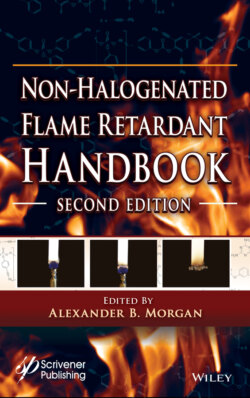Читать книгу Non-halogenated Flame Retardant Handbook - Группа авторов - Страница 19
1.3.4 European Union
ОглавлениеThe European Union (EU) has been at the forefront of chemical regulation for chemicals used in commerce. Relevant to flame retardant use, the Restriction of Hazardous Substances in Electrical and Electronic Equipment (RoHS) [4, 5] and Waste Electrical and Electronic Equipment (WEEE) [6, 7] laws have forced out the legacy brominated flame retardants PBDEs and PBBs from use. The newest chemical regulation which governs all chemicals, including non-halogenated, is the Registration, Evaluation, Authorisation and Restriction of Chemicals (REACH) [54]. REACH introduced the concept of Substances of Very High Concern (SVHC), based on PBT and CMR (carcinogenic, mutagenic and reprotoxic) properties. SVHC are supposed to be phased out and substituted unless there is authorization for specific uses. The following flame retardants are identified as SVHC or on the candidate list (as of 2021-03): Penta-, Octa- and DecaBDE, HBCD, Short chain chlorinated paraffins, Tris(2-chloroethyl) phosphate, Boric acid (toxic for reproduction) and Trixylyl phosphate. Since 2021, manufacturers of finished articles have to provide information on SVHCs in their products in a public database (SCIP, substances of concern in products) maintained by the European Chemicals Agency (ECHA).
Because commerce is global, REACH will likely affect flame retardant use in multiple countries, especially those which import to the EU, and export or manufacture within the EU. It is highly likely that as flame retardant chemicals with negative PBT profiles are found they will be banned or regulated under REACH, and this guidance will likely lead to other countries following suit for their own regulations. It is important to note here that the EU, as of the writing of this chapter, does have harmonized regulations across EU member states, but, there is some disagreement and discord between member states where a particular member state would want stricter or lesser regulation on chemicals. There is a long and deliberate mechanism in place in the EU to resolve these disputes, but the disputes can take years to address. Of final note, the United Kingdom has left the EU, but is still sorting out its regulations and commercial connections and collaborations with the EU. How UK independence will affect regulation of flame retardant chemicals in that country is not clear at this time.
